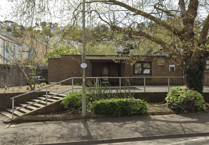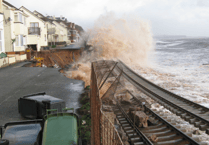In this article, we’ll look at some everyday items that you might not expect to contain plastic and what you should do with them. Also, we’ll touch on new research which has discovered microplastics in our blood stream.
Last year, we wrote about the amount of plastic, in the form of microplastics, we are all eating. It turns out to be the equivalent of a Lego brick a month. Plastic is closer to some ‘foodstuffs’ than you might think. For example, chewing gum is now made with plastic. It used to be made from ‘chicle’, a natural gum made from tree sap.
So now, we’re chewing on a polymer, a plastic made from oil that’s similar to the stuff used in car tyres. You might say the answer is easy; just avoid chewing gum, but how can the manufacturers get away with this in the first place? If you do like chewing gum, there is some good news - ‘plastic-free’ gum is now available from one of the leading supermarkets. Sometimes, you just couldn’t make it up!
Even our favourite drink has become tainted with plastic. More people are beginning to recognise that tea bags contain plastic. What happens to the plastic when you pour boiling water over the tea bags and drink the resulting infusion is anyone’s guess.
A nice cup of tea sounds very comforting, but manufacturers have decided we need plastic in our tea bags to stop them breaking open. The plastic used is a very thin layer of polypropylene which may well find its way into our soil, rivers and sea. The tea bag is a wonderful triumph of convenience over quality, and now, the health of the planet.
The dusty powder in a tea bag bears no resemblance to loose tea, which you can still get, at a price. You don’t need a teapot to drink loose tea; a simple infuser works fine. Look out also for ‘plastic-free’ tea bags which are becoming increasingly available.
If you take milk with your tea, it’s likely to have come in a plastic bottle or carton. It might not be obvious but cartons of milk, juice and other liquids are all hiding plastic. They’re made from paperboard, aluminium and a type of plastic called polyethylene. Being mixed materials, they are very hard to recycle and as is the case with all plastic recycling, the plastic can only be recycled so many times before it becomes useless.
A study found that milk prior to packaging/bottling still contained some microplastics, but 10 times more plastic particles were found in samples of milk taken from plastic bottles or cartons. Unfortunately, even plant-based milk alternatives sold in similar packaging are likely to contain some microplastics.
If you prefer coffee and get it in a so called ‘paper’ takeaway cup, the cup will usually contain a thin coating polyethylene. Hot liquid in a 100% paper cup would leak out and burn your hands very quickly!
The answer is to look carefully at what your takeaway cup is made of, or better still, use your own reusable cup preferably made from stainless steel or similar. Nearly all takeaway cups, even those labelled as ‘biodegradable’ or ‘compostable’, end up in landfill or energy from waste plants – leaking toxins into the environment one way or another.
So, you might think that drinks from glass bottles are the only safe way to avoid plastic. However, while the bottle might be safe, the cap will almost certainly now contain plastic. Caps used to be made from aluminium and a cork liner. Metal bottle caps now come lined with foamed polyethylene or plastisol.
We cannot avoid consuming plastic until governments wake up to the issue. Microplastic pollution is now ubiquitous across the planet, from the summit of Mount Everest to the deepest oceans and in the placentas of pregnant women.
The long-term effects of eating plastic cannot yet be measured but we know it’s in our bodies and now it’s been found in our blood stream, lodged deep in the lung tissue of living people.
Going back to basics, avoiding processed food, anything packaged in plastic, and cutting out meat, might be a big step for people to take but it may be healthier for us and our planet in the long run.
our group is helping to organise the first day of the Jubilee celebrations here in Dawlish. It’s on June 2 and is called Turn the Tide 2022. It will have an environmental theme based around our oceans and waterways and include speakers, children’s activities, mermaids (yes, two!), sea shanties, fun runs, films etc. The full programme has just been published on the LoveDawlish





Comments
This article has no comments yet. Be the first to leave a comment.